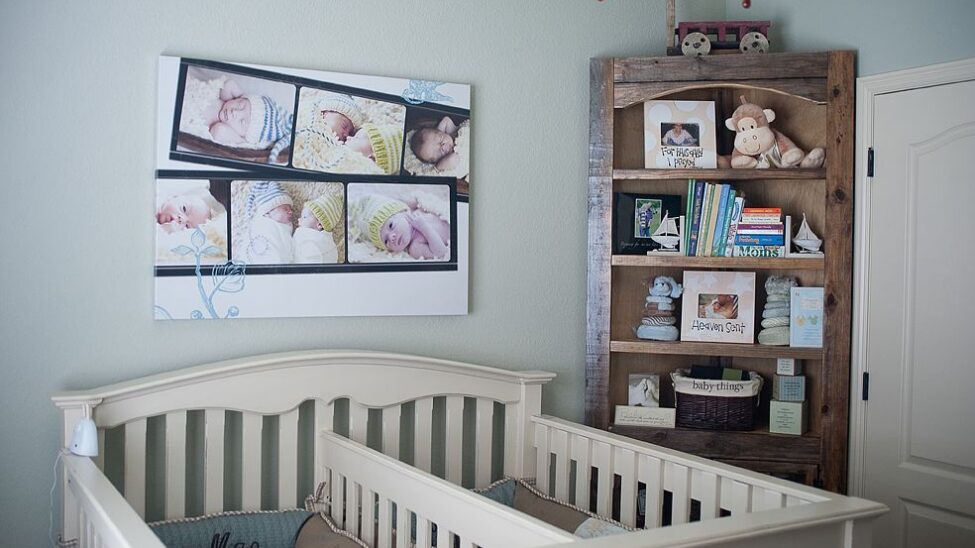
When Twice the Joy Meets Half the Space
Bringing home twins is its own kind of magic — and madness. You’re suddenly outnumbered, outpaced, and often, out of space. I remember standing in our tiny nursery, measuring tape in one hand, a coffee in the other (cold, of course), wondering where two cribs were supposed to go. Spoiler: they didn’t. But that didn’t mean we had to sacrifice sleep or safety. We just had to get creative — and very honest about what actually mattered.
The crib setup you choose isn’t just about saving space. It’s about making those first blurry months a little easier on everyone — especially you.
In this post, I’ll share what I’ve learned — not from Pinterest-perfect photos, but from real nights with real babies. If you’re expecting multiples, or parenting them now, I hope this saves you some of the trial and error we went through.
Not All Cribs Fit All Rooms
Let’s get the obvious out of the way: two cribs take up more room than one. But not every family has a dedicated nursery, and even when we do, it’s not always a spacious one. Some families co-sleep, some share a bedroom, and others carve out space in the living room. All of it’s valid.
When floor space is limited, mini cribs are often the go-to. They’re narrower, often on wheels, and many fold down flat for storage. But there’s a tradeoff: your babies may outgrow them by 18 months. If you’d rather not buy again so soon, look for convertible cribs that start small but grow with your kids — though again, those tend to take up more room from the start.
Think long-term, not just newborn-stage. Your babies won’t stay tiny for long — but your space probably will.
We started with one full-size crib and a bassinet, then transitioned to two cribs once the girls began rolling over. That gave us a few months of breathing room and time to see what layout really worked.
Do Twins Need Two Cribs?
It’s one of the first questions people ask, and there’s no one-size-fits-all answer. The AAP recommends that babies sleep in separate surfaces to reduce SIDS risk. But many parents — including us — start out with both babies in one crib, especially if they were preemies or used to sleeping close together in the NICU.
For the first few weeks, we swaddled and positioned them on opposite ends of the crib. It worked beautifully — until they started moving. At that point, we split them up. Not out of fear, but because they kept waking each other up.
Some families go straight for two cribs. Others start with a twin bassinet. There’s no wrong choice, as long as it’s safe and you’re watching how your babies respond.
Sleeping arrangements can evolve. What feels right now might change in two weeks — and that’s okay.
What Actually Matters: Safety Over Style
It’s tempting to focus on how the nursery looks — matching bedding, trendy colors, minimalist vibes. But cribs are one area where function has to come first. Make sure whatever you pick meets current safety standards: firm mattress, no drop sides, slats no more than 2 3/8 inches apart.
If you’re going secondhand (and I get it — twins double your costs), check recall lists and look for models made after 2011. That’s when stricter safety regulations went into effect in the US.
Storage drawers, built-in changers, cute canopies — they’re all nice-to-haves. But don’t let them be deal-breakers. Focus on what helps you stay organized and rested, not overwhelmed by clutter.
You’ll care a lot more about whether the crib wheels roll smoothly at 3 a.m. than whether it matched the Pinterest board.
What Worked for Us
In our home, we ended up with two mini cribs placed in an L-shape in the corner of our bedroom. It wasn’t glamorous, but it was safe, breathable, and let us reach both babies quickly. We added blackout curtains, white noise, and kept a changing pad in the closet.
Later, when we moved to a bigger place, we switched to full-size cribs in the same room, but kept the layout minimal. Less furniture meant more floor space for play — and fewer corners to bump into during night feeds.
If you’re feeling overwhelmed right now, breathe. The “perfect” setup doesn’t exist — only what works for your babies and your sanity. And that’s enough.
Two babies are never double the trouble. Just double the chance to learn what really matters.


